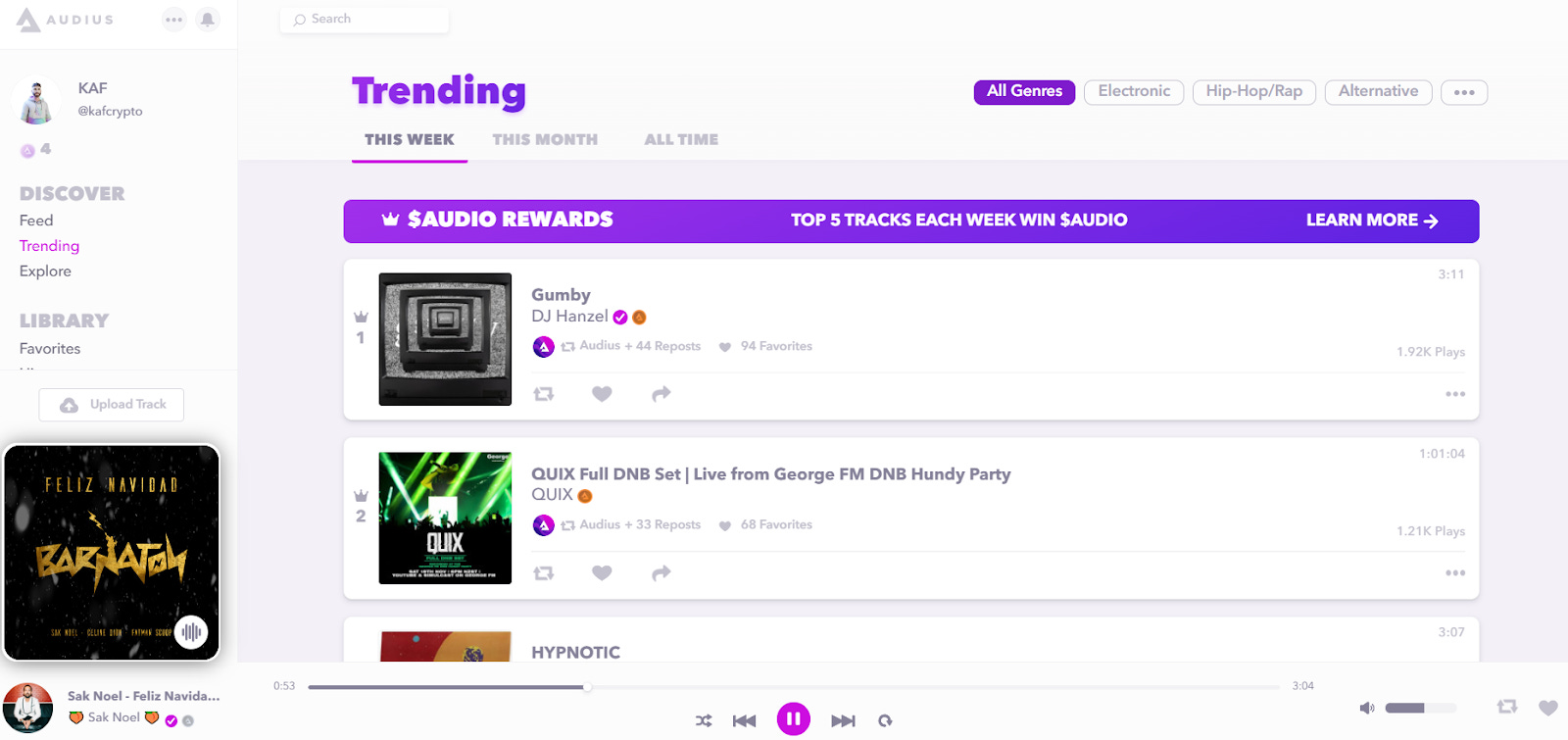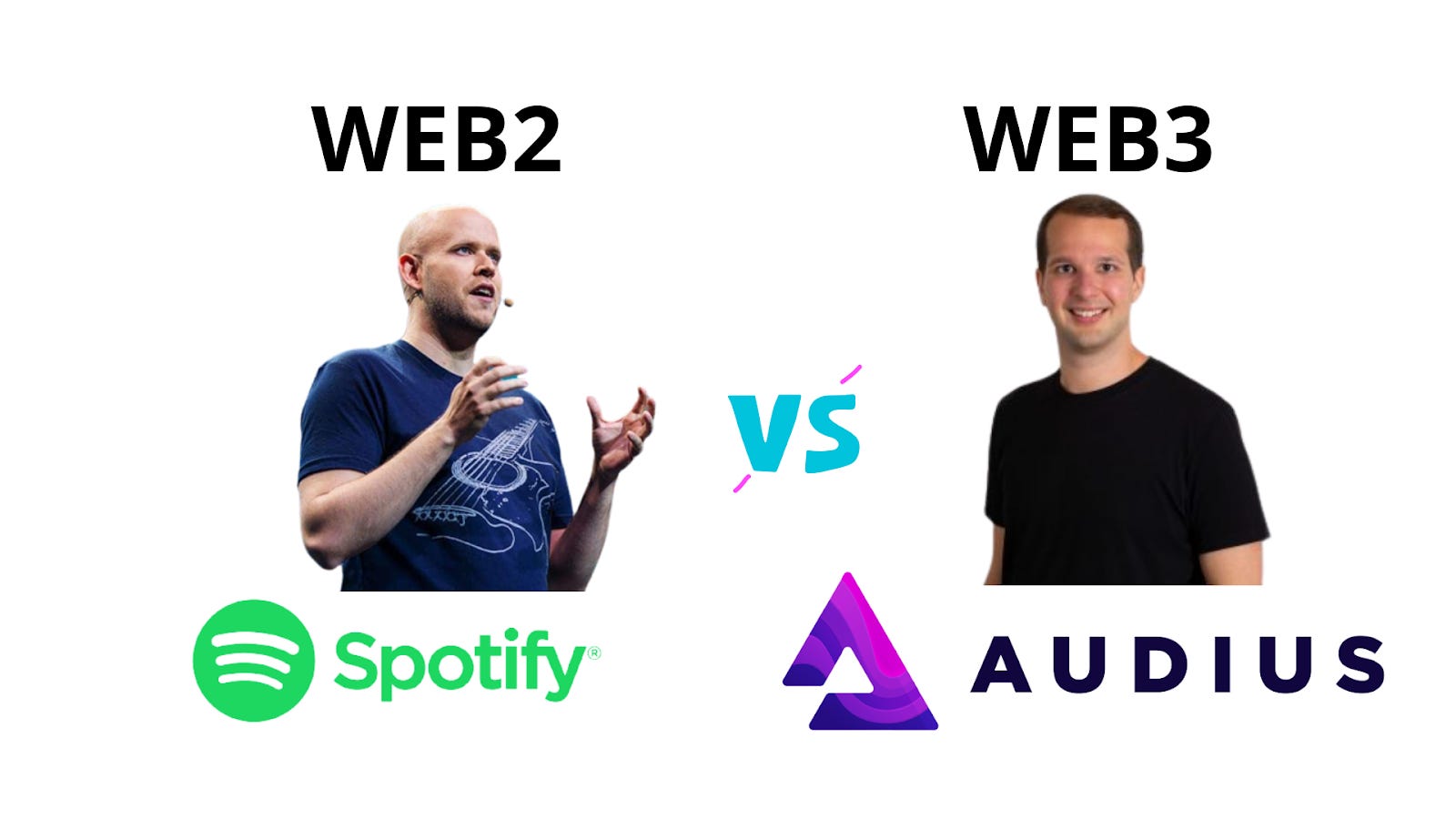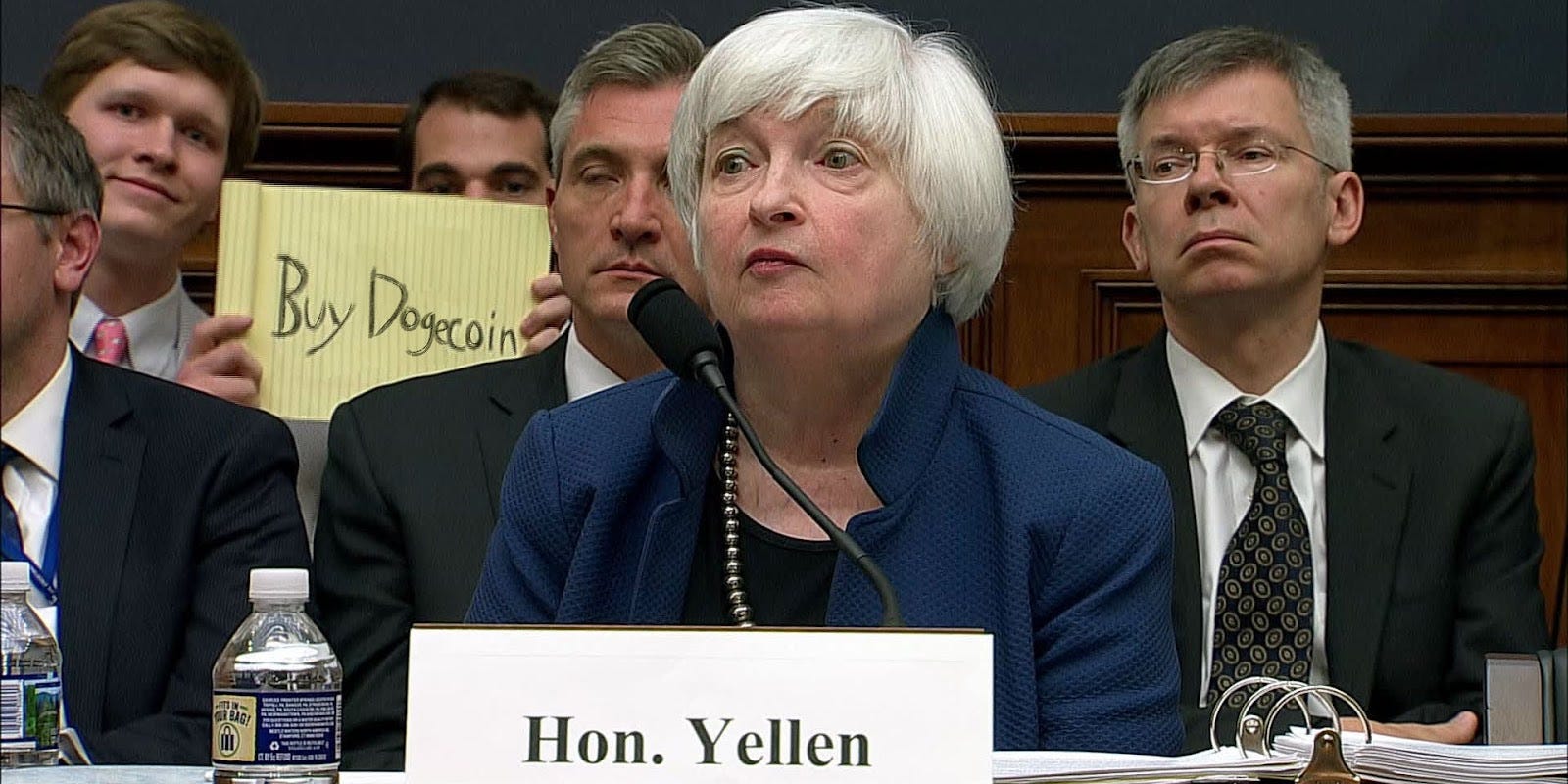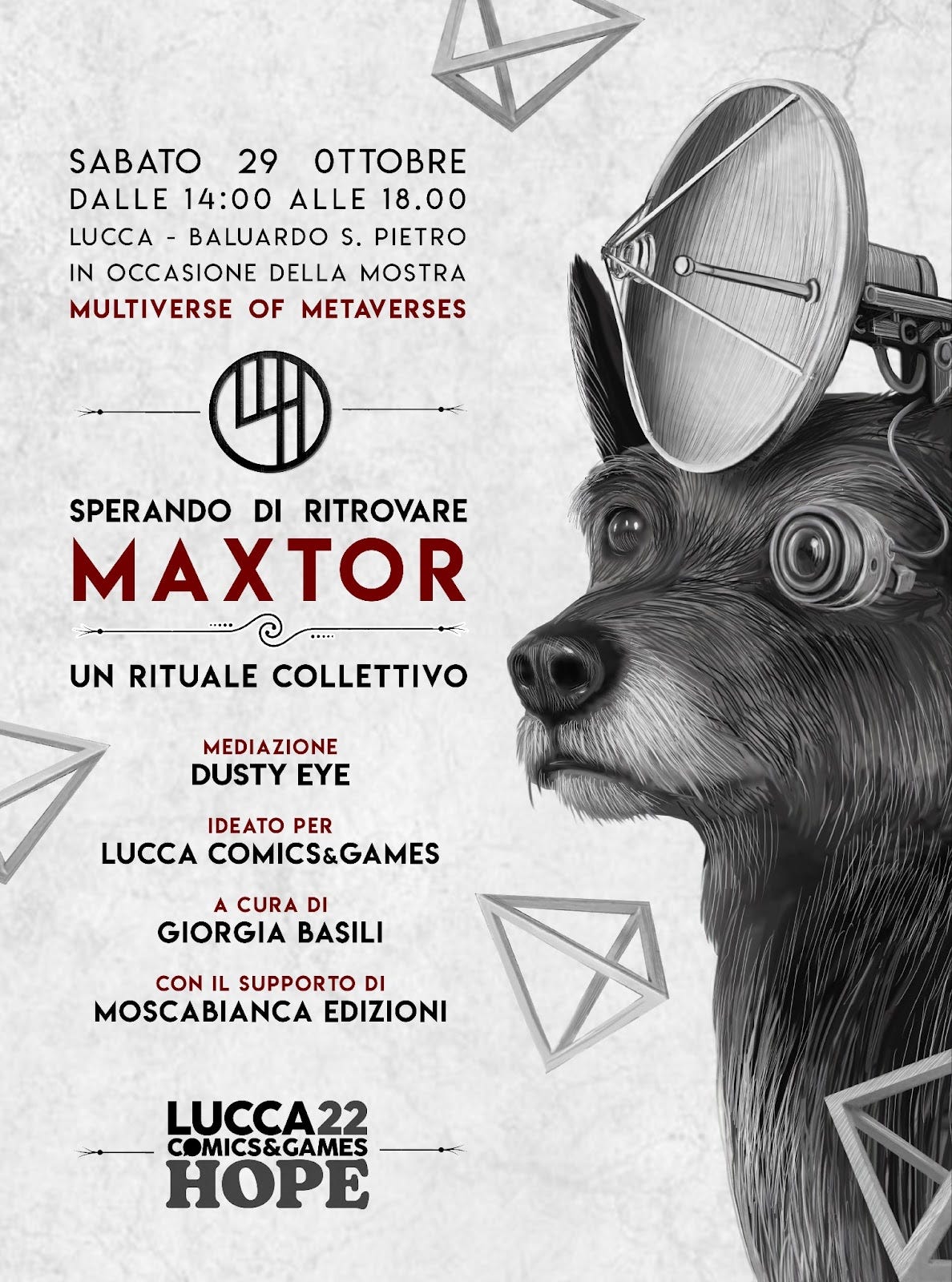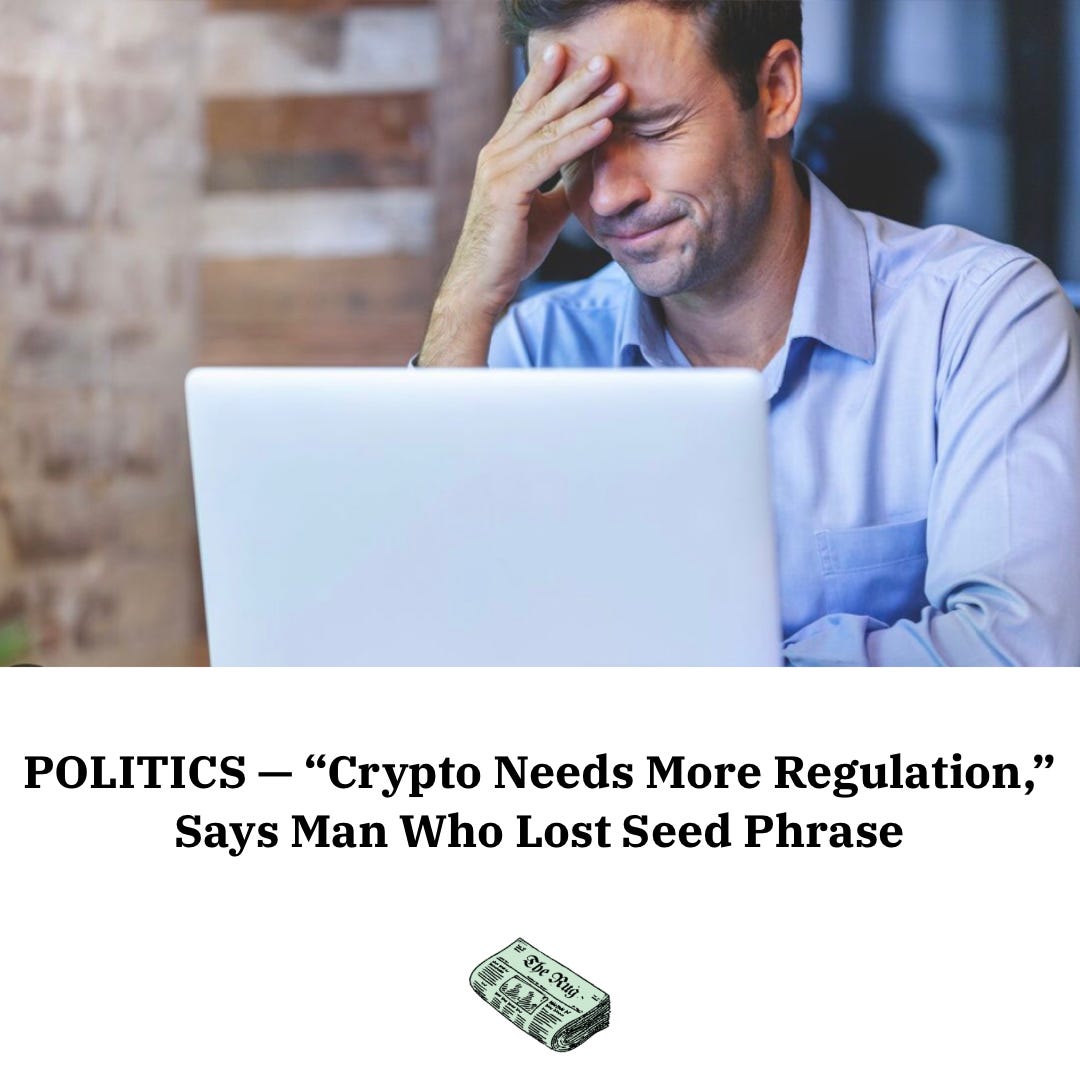Emerging Web3 Innovations Take Art Basel by Storm | Decentralized Arts
Dear Bankless Nation, At its outset, NFT technology was little more than a protocol granting ownership rights over a piece of content attached to a hash stored on a blockchain. The original NFT protocol, ERC-721, was designed to provide unique values to numerous individual tokens minted on a single smart contract. According to the Ethereum developer documentation:
This appears to denote the functions of a regular token. However, the ERC-721 standard provided ample opportunity for blockchain—and more specifically, NFT—technology to evolve. Over the past several weeks, we have seen brands emerge with their own expressions of how this technology may be utilized to close the gap between the digital and the physical. And this evolution continues unabated. This week, Tam Gryn and Brian Trunzo provide insight on the hot topics that will dominate discussion during this year’s Art Basel in their guest piece “Emerging Web3 Innovations That Will Be The Talk of Art Basel and Beyond.” Considering how far NFT technology has already come, they discuss how culture is adapting to the many uses of this tech, with the idea that the “gap between the physical and digital can close, the infinitely reproducible can be unique once more.” Leading up to this, Kaf takes us on a tour of Audius, the web3 Spotify and potential contender for one of the top spots in music streaming platforms. The innovation behind this protocol has the potential to change the way we consume and interact with music. Uniswap has taken a big step into the NFT space by launching their own aggregator, based off their recent acquisition of Genie. Animoca Brands is creating a metaverse fund. Perchy shares a little insight into the origin story of "Chip” in Chippi Corner. And The Rug brings us the latest mostly credible headline from the Proof-of-Work (PoW) community. Welcome to Decentralized Arts. Contributors: BanklessDAO Writers Guild (Grendel, Kouros, Kaf, nonsensetwice, Frank America) This is the official NFT newsletter of BanklessDAO. If you were a Premium Member of the Bankless Newsletter as of May 1st, 2021, you have been subscribed to this newsletter at launch. To unsubscribe, edit your settings here. Curated NFT NewsAnimoca Brands to Start $2B Metaverse FundThe NFT and gaming investor Aminoca Brands is planning to set up a fund of 2 billion USD to invest in the metaverse, the firm's co-founder Yat Siu said in an interview. The fund will be named Animoca Capital and its investments will begin in 2023. The fund is also billing itself as an attractive gateway for web2 investors, who are more appetitive for companies that are in a growth stage. These tend to be safer investments than startups, which carry a high risk of failure. Animoca Brands is famous for investing in many big web gaming titles. The Sandbox, Alien Worlds, Axie Infinity, and Decentraland are some of the most notable examples. Uniswap Launches NFT AggregatorThe platform has launched its own NFT aggregator that enables users to see the best price for several NFTs released on NFT marketplaces such as OpenSea, X2Y2, Sudoswap, LooksRare, and more. This development is coming after Uniswap acquired Genie, an NFT aggregator, in June 2022 as part of its expansion strategy. Genie has recently been discontinued with the implementation of the new aggregator. The team added that there is also a 5 million USDC airdrop for people that have used Genie in the past. The details read that 300 USDC will be available for users who did more than one transaction before the snapshot taken on April 15, 2022, while for the second category, 1000 USDC, will be given to users who held the Genie: Genesis NFT as of the snapshot. Is Audius the new Spotify?Distribute, monetize and stream audio freely By Kaf We at Decentralized Arts have talked many times about how web3 is going to put the power over its content in the hands of the creators. This includes art, clothing, video games, and music. Currently, only 12% of the 43 billion USD in annual revenue from the music industry goes to content artists. In addition, artists have little influence over how their music is distributed. To address these and other issues faced by artists, Audius was born, a blockchain-based music streaming protocol. This alternative music platform gives everyone involved a piece of the profits, including listeners, artists, and node operators. What is Audius?Created in 2018, Audius is a community-owned, artist-controlled music streaming platform whose goal is to enable any user to freely distribute, monetize, and stream audio. It was co-founded by Roneil Rumburg and Forrest Browning, both computer scientists with Ivy League degrees who were also early Bitcoin adopters and investors in Lightning Labs. Audius aims to put money and power back into artists by connecting them directly with their listeners and bypassing record labels and middlemen. 90% of the proceeds from sales go to the artists, with the remaining 10% going to the network's node operators. The platform specifically does not take a cut of the revenue. With the AUDIO token, Audius rewards its staff and early investors while maintaining financial stability. Musicians have the option of charging a one-time fee to access all content, providing free content and streaming, or selling their music as NFTs. One of the ways to encourage user participation is through competitions where they can win AUDIO. Holding AUDIO then provides governance power over the platform. Unlike gated or curated platforms such as SuperRare or Sound.xyz, don't need to be signed to a label or have a large following to start distributing your music on Audius. How Does Audius Work?Audius works like a music cooperative, with the token aligning incentives among the three constituent groups that make the platform work: node operators, artists, and fans. Audius nodes continually send Interplanetary File System (IPFS) snapshots of the protocol to the Ethereum network, which is where artists’ music is stored. The Audius network is powered by the Ethereum-based AUDIO ERC-20 token, which has three functions:
Can Audius Dethrone Spotify?With over 180 million subscribers and 422 million people using Spotify each month, it seems hard to dethrone the king of music streaming platforms. However, web3 will happen sooner or later. Many Web2 platforms are seeing blockchain-based projects being born that could dethrone them in the coming years. That is why Instagram, Shopify, and Youtube are studying how to evolve. Spotify is no different. Spotify’s overhead increases every year, which forces musicians to pay more, but the receivers are not growing at the necessary rate, and competition is increasing. So there are two direct solutions: either raise fees (they do it almost every year), or reduce what they pay musicians, which could be disastrous for them. In principle, Spotify's strategy is reminiscent of Amazon's. For two decades, the e-commerce giant renounced profits because it invested everything it earned in developing new services and expanding its operations. But Spotify doesn’t have the investor support that Amazon enjoys. In May of this year Spotify announced they were going to implement NFTs on their platform. This shows that they do not want to be left out of this new trend for fear of losing artists, nor can they afford to miss out on this emergent technology. On the other hand, Audius is positioned as a leader at the intersection of the music market and blockchain technology. While this is promising, it is not without its challenges. Although Audius proposes several fundamental changes, there are several barriers it continues to face as it seeks mass public approval. For example, while Audius currently has more than 4 million monthly users, this is far cry from Spotify's user base. Also, the recent market crash has dealt a hard blow to their token. Reaching its all-time high (ATH) of 4 USD in March 2021, it is currently trading at 0.15 USD. As a result, AUDIO is the 147th largest cryptocurrency with a market capitalization of $147 million. Investors speculate that AUDIO's poor tokenomics and 7% annual inflation rate are the reasons why it did not rise higher among major cryptocurrencies. On the other hand, Audius is the first music streaming platform to partner with TikTok. This will allow TikTok creators to use songs available on the Audius platform directly in their videos. The fact that TikTok has chosen Audius over other major competitors is a great sign of confidence in the platform. Going forward, only time will tell if this new model of content creator will be able to adapt and compete against a giant like Spotify in its race to onboard more listeners. Although still in development, Audius is transforming music streaming with features like community governance and decentralization. Other projects like Royal and Sound.xyz share a similar philosophy. The new generations more than ever understand the power of digital communities. Thanks to web3 we can change the course that the internet has taken, including digital music ownership, interaction, and expression. Why do a few people benefit and decide on something in which we all add value? It's time to reclaim ownership of our content and media. Web3 makes this possible. Let's unlock the true potential of music! The Rug WeeklyDogecoin Slides Into Second PlaceBrought to you by The Rug Nobody can believe that Doge has ascended to the right hand of the Godfather Bitcoin, and yet it is true. With Ethereum moving to PoS, PoW has a new 2nd rate star. In this article we look deep inside the doge-brain.
Collect the mind of the Dogelonian as an NFT on optimism. Emerging Web3 Innovations That Will Be The Talk of Art Basel and BeyondBy Tam Gryn, Art Curator and Author, and Brian Trunzo, Metaverse Lead at Polygon Technology In 1935, at the dawn of mass media, critical theorist Walter Benjamin wrote an influential essay about the impact of new means of mechanical reproduction on art. He argued that while technologies like print, photography, and radio enable new collective forms of art appreciation, they also rob an art work of its “aura”—an almost supernatural quality tied to its uniqueness. Almost a century later, technology has all but collapsed the distance between the audience and art, prying the works from their context in a process that Benjamin found so very destructive to the aura. You can sneak a peek at Jerusalem’s Western Wall via a live cam on your morning commute or get up close and personal with Mona Lisa in an eight-minute VR experience and still have enough lunch break left to browse Twitter. As Art Basel opens on Dec. 1, we are once again on the cusp of transformative technological change. The floodgates of creativity have opened: major brands are experimenting with non-fungible tokens (NFTs) and giving users more power by integrating on green blockchains like Polygon, which is Proof-of-Stake (PoS). Metalabel, a blockchain project by Kickstarter co-founder Yancey Strickler, is building the infrastructure for collective creation in what they call “creativity in multiplayer mode.” Decentralized autonomous organizations, social coins, soulbound tokens, and more—the list of innovations keeps growing. Artists interested in probing the boundaries of what’s possible are getting into the industry and starting to make things. So if art in the age of mechanical reproduction is infinitely reproducible and destructive to a piece’s authentic “aura,” non-fungible tokens (NFTs) in the digital age promise to restore it. The gap between the physical and digital can close, the infinitely reproducible can be unique once more. Casting forward is no easy task, but we’ve found three trends in crypto art that everyone will be buzzing about during the art fair and beyond. Digitizing Public Art on Public Blockchains“We erect monuments so that we shall always remember,” critic Arthur Danto famously wrote, “and build memorials so that we shall never forget.” In a historic moment of significant uncertainty, people have turned to art for guidance. Works commissioned by governments in public spaces remain one of the last, best ungated points of artistic experience for all. Public art, accessible to all and owned in common, is a forerunner for many Web3 values that put mere competition in the dustbin of history. We believe that web3 integrations of public art on public blockchains is a perfect communion and will become a touchpoint for innovative communities around the world. Imagine a municipality that wants to commission a public mural, so it opens a call for submissions. The winning artist could be selected by citizens that vote using blockchain-native technology, environments that will reward civic participation. Then, the mural itself and all materials related to design–sketches, outlines, correspondences, etc.–could be digitized and sold as NFTs. Owners would be recognized in the same way donors are recognized now. Revenue from NFT sales would not only benefit the artist with royalties in perpetuity (which is its own ongoing debate), but also help fund future art projects or other municipal priorities. Artists receive wider exposure beyond the geographical limits of their commission, while citizens meaningfully own the cultural landscape of their own communities. The web3 pivot towards bridging the physical/digital and public/private divides is already happening. Vienna’s Belvedere Museum turned Klimt’s “The Kiss” into an NFT series. Owners receive membership and other benefits that also help fund and maintain the public museum. Cities in Broward County, alongside cultural touch points like Miami, San Francisco, and Atlanta, are in the early days of piloting programs to fund public art through NFTs. Organizations like CODAMADE help bridge the gap between public and private. The nature of NFTs are public in the same way that public art is public, even when it’s owned: accessible and viewable, open to everyone. That’s the point. Music NFTs Get VisualIn a nod to the early days of MTV and now TikTok, musicians and performance artists are experimenting with pioneering technologies that upend established genres and live performance. Take for instance Marina Abramović, who was asked on a recent podcast, “Can you imagine someone performing the digital version of you, controlling the avatar, coming up with new pieces posthumously?” Abramović could, in fact. One of the first performance artists to drive a market for her work, she’s now also experimenting with NFTs. By using motion capture technology, AI video generation, or experimenting with augmented reality (AR), musical and performance artists open up new pathways of funding. A couple examples: Mysterious is a music video NFT platform that continues to innovate the relationship between musicians and artists by cultivating conversations with micro-communities centered around mutual ownership and joy. wavWRLD, meanwhile, has held token-gated live performances for holders of specific NFTs, after which all collectors, whether present or not, receive airdrops of the performance. The trend we’re seeing is toward intimacy, group ownership, and syncing the aural and visual to turn fandom into a two-way relationship, with plenty of room on the runway for experimentation. NFT benefits for Dance ArtistsSummer 1984. Lionel Richie is performing "All Night Long" at the LA Olympics closing ceremony, surrounded by breakdancers. With Vice President George Bush Sr. in the stands and the whole world watching on TV, the kids popped, locked, and did windmills on stage. It's a peak cultural moment for a dance form that began on the streets of New York. When hip hop went global, pioneering MCs and DJs like Grandmaster Flash and Kool Herc became superstars. But the B-Boys were left behind for one simple reason: there was no way to package and sell dance. Four decades later, things have changed. Social media is oozing with the viral dance du jour with hundreds of millions of fans performing dances (and in some cases monetizing the streams). Still, dance artists and viral dancers alike have difficulty capturing the cultural value they’ve created. A lot of these conversations will converge in the emerging concept of a metaverse. Motion capture technology that mints specific, custom animated emotes bring bodily movement onto the blockchain. The creative value of dance can be captured and minted as an NFT. Thanks to experiences like Xbox Kinect and games like Fortnight, there’s already a market for animated emotes. Heat, for instance, will be a marketplace where people can buy customizable, self-expressed movements for digital avatars. Dance will be imported to digital realms, from gaming to metaverse. So even as we continue to live outside virtual environments, our ability to express ourselves and support artists of physical expression in digital spaces will grow across environments like Decentraland and Sandbox. Flash forward to the Paris Summer Olympics in 2024. The opening ceremony features a performance with dancers, all of which can be minted piecemeal online, with portable emotes that the avatar in the game you’ve been obsessed with will be able to reproduce. You buy a copy of one of the songs played in the ceremony by a rising musician, who holds a concert the next day in a Parisian crypt, with access to all NFT holders. Look around. You’re surrounded by other artists and a community that’s arriving all at once. Chippi CornerBy Perchy MAXTOR AT LUCCA COMICS&GAMESIllustrated by GIORGIO FINAMORE, SELENA GARU MAHER AND LELRAH It is the twenty-ninth day of the tenth month of the twenty-second year of the twenty-first century. In short, October 29, 2022. The city of Lucca (Tuscany, Italy) hosts the annual edition of Lucca Comics & Games. Thousands of visitors, many in cosplay. The hands of passers-by hold hundreds of bags full of memorabilia from the largest Italian convention of comics and games in all its forms. DustyEye's spokesperson was hosted for four hours. Four hours in which she had the opportunity to collect information and testimonies related to Maxtor, the cyberdog lost in the vortex of Pluritime. The following is a report of the highlights spread over the hours available.
______________________ WEB: www.DustyEye.com MemeA small joke contributed by The Rug. PostScript & AcknowledgementsDecentralized Arts is written and produced by a small team of contributors who are passionate about art, both visual and written, and its growing place in crypto and NFTs. With each edition, we aim to bring you not only the most current and relevant news in the NFT space, but also explorations in what it means for our culture and societies for this market to continue to grow and expand. When everyone is an owner of art, we all gain a deeper appreciation for it. If you enjoy reading this newsletter, please share it with someone who you think will appreciate the content. We also welcome suggestions via our feedback form. With great appreciation for you, we thank you for reading and subscribing to Decentralized Arts. Cordially, Grendel, Kouros, Kaf, nonsensetwice, and Frank America Special thank you to our guest writers, Tam Gryn and Brian Trunzo:About Tam Art Curator and Author of “How to Create and Sell NFTs, A Guide For All Artists”, Tam Gryn specializes in the intersection between art and other industries, new creative economies, crypto for creative communities, satisfying audiences’ desire for new and genuine art experiences, generating buzz, newfound exposure and foot traffic through art. Tam is the former Director of Fine Arts at Rally.io where she helped artists create their own autonomous crypto economies as well as Head Curator at SHOWFIELDS where she helped to bridge art with retail through art and brand collaborations. She is a Guest Lecturer at Harvard Business School and New York Academy of the Arts. Tam currently contributes to Decentralized Arts by BanklessDAO and Women in Web3 Equity Miami. She is the former Head of the Curatorial Department of the Artist Pension Trust as well as Head Curator for RAW POP UP and Founder of Culturadora. Tam sits on the board of the Kulturespace Foundation in Berlin. About Brian Brian Trunzo is the current Metaverse Lead at Polygon Technology where he leads business development for the Polygon blockchain and its Ethereum Layer 2 solutions. Additionally, Brian is the co-founder of Burrata, helping to bring "culture" on chain to the world of web3 using strategy and insights impact business positively. Prior, Brian was the Vice President of Events for Informa Markets. He has founded several clothing brands including Deveaux New York and Carson Street Clothiers. Before transitioning into the fashion and entertainment industry, Brian was Financial Regulatory Attorney at Cadwalader, Wickersham & Taft LLP. Brian received his degree in Journalism from NYU and his JD from Villanova University School of Law. |
Older messages
That’s Not a Bank; That’s an IOU | Bankless Publishing Recap
Tuesday, December 6, 2022
Top-shelf Educational Web3 Content Shipped Directly to Your Inbox
Improving the Guest Pass System | BanklessDAO Weekly Rollup
Saturday, December 3, 2022
Catch Up With What Happened This Week in BanklessDAO
Freshman Year in Web3 | State of the DAOs
Thursday, December 1, 2022
You're reading State of the DAOs, the high-signal low-noise newsletter for understanding DAOs.
The 10 Most Expensive NFTs | Decentralized Arts
Wednesday, November 30, 2022
Dear Bankless Nation, NFTs have come a long way since their inception. What once was a protocol slated for cryptoart, NFT technology has encompassed far more utility than the purposes for which it was
Welcome To the Research Guild | BanklessDAO Weekly Rollup
Saturday, November 26, 2022
Catch Up With What Happened This Week in BanklessDAO
You Might Also Like
Bitcoin pullback could be set up for $370k bull run price target
Friday, February 28, 2025
Bitcoin's 27% slide raises prospects for rebound, aligns with historical cycle patterns. ͏ ͏ ͏ ͏ ͏ ͏ ͏ ͏ ͏ ͏ ͏ ͏ ͏ ͏ ͏ ͏ ͏ ͏ ͏ ͏ ͏ ͏ ͏ ͏ ͏ ͏ ͏ ͏ ͏ ͏ ͏ ͏ ͏ ͏ ͏ ͏ ͏ ͏ ͏ ͏ ͏ ͏ ͏ ͏ ͏ ͏ ͏ ͏ ͏ ͏ ͏ ͏ ͏ ͏
WuBlockchain Weekly: SEC Terminates Lawsuits Against Multiple Crypto Companies, Bitcoin Drops Below $80,000, OKX S…
Friday, February 28, 2025
On Friday, OKX market data revealed that BTC fell below $80000, reaching a low of $78258, with the current price at $80514, reflecting a 24-hour decline of 7.22%. ͏ ͏ ͏ ͏ ͏ ͏ ͏ ͏ ͏ ͏ ͏ ͏ ͏ ͏ ͏ ͏ ͏ ͏ ͏
FBI confirms North Korea-backed Lazarus hackers stole $1.5 billion from Bybit
Thursday, February 27, 2025
FBI tracks Ethereum laundering spree by North Korean hackers amid rising threat of cyber warfare in the crypto world. ͏ ͏ ͏ ͏ ͏ ͏ ͏ ͏ ͏ ͏ ͏ ͏ ͏ ͏ ͏ ͏ ͏ ͏ ͏ ͏ ͏ ͏ ͏ ͏ ͏ ͏ ͏ ͏ ͏ ͏ ͏ ͏ ͏ ͏ ͏ ͏ ͏ ͏ ͏ ͏ ͏ ͏
Interview with MicroStrategy Founder Michael Saylor: The Company Holding the Most Bitcoin in the World
Thursday, February 27, 2025
In this interview, Colin from WuBlockchain had an in-depth discussion with MicroStrategy founder Michael Saylor about the company's ongoing Bitcoin acquisition strategy, the growing adoption of
Abu Dhabi Invests $436.9M In Bitcoin ETF
Thursday, February 27, 2025
February 17th, 2025 Sign Up Your Weekly Update On All Things Crypto TL;DR Abu Dhabi Invests $436.9M In Bitcoin ETF Changpeng Zhao Sparks Meme Coin Rumours Coinbase Finally Lists POPCAT & PENGU
📈 BTC’s realised price (average acquisition price) reached an all-time high of $43,000; State of Wisconsin Invest…
Thursday, February 27, 2025
BTC's realised price reached an all-time high of $43000; Abu Dhabi's Mubadala Investment disclosed its BTC ETF holdings; South Korea to allow universities and charities to sell crypto donations
HashKey Exchange's Interpretation of the Hong Kong SFC Virtual Asset Roadmap
Thursday, February 27, 2025
We are pleased to see the Hong Kong government release the forward-looking and pragmatic “ASPI-Re” roadmap for advancing the virtual asset industry. ͏ ͏ ͏ ͏ ͏ ͏ ͏ ͏ ͏ ͏ ͏ ͏ ͏ ͏ ͏ ͏ ͏ ͏ ͏ ͏ ͏ ͏ ͏ ͏ ͏ ͏
Argentina’s stock market plummets amid President Javier Milei’s LIBRA memecoin scandal
Thursday, February 27, 2025
Argentina's economic landscape shaken as Milei's LIBRA endorsement turns into multi-billion dollar fiasco. ͏ ͏ ͏ ͏ ͏ ͏ ͏ ͏ ͏ ͏ ͏ ͏ ͏ ͏ ͏ ͏ ͏ ͏ ͏ ͏ ͏ ͏ ͏ ͏ ͏ ͏ ͏ ͏ ͏ ͏ ͏ ͏ ͏ ͏ ͏ ͏ ͏ ͏ ͏ ͏ ͏ ͏ ͏
Heated AMA Debate: 0G Team Responds to Allegations of CFX Soft Rug, Overvaluation, and Token Commitment Concerns
Thursday, February 27, 2025
This AMA primarily focused on the relationship between Conflux and 0G Labs, discussing 0G Labs' high valuation, fundraising structure, technical direction, and community concerns over transparency.
Pectra: Ethereum’s Next Major Upgrade
Thursday, February 27, 2025
Breaking down key changes included in Ethereum's Pectra hard-fork ͏ ͏ ͏ ͏ ͏ ͏ ͏ ͏ ͏ ͏ ͏ ͏ ͏ ͏ ͏ ͏ ͏ ͏ ͏ ͏ ͏ ͏ ͏ ͏ ͏ ͏ ͏ ͏ ͏ ͏ ͏ ͏ ͏ ͏ ͏ ͏ ͏ ͏ ͏ ͏ ͏ ͏ ͏ ͏ ͏ ͏ ͏ ͏ ͏ ͏ ͏ ͏ ͏ ͏ ͏ ͏ ͏ ͏ ͏ ͏ ͏ ͏ ͏ ͏ ͏ ͏


